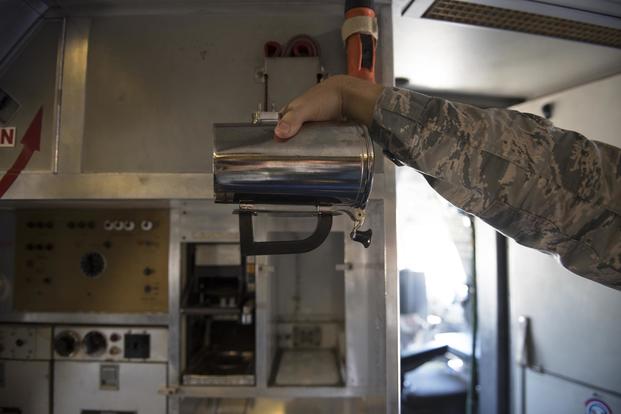Sen. Chuck Grassley is not letting go of the Air Force's thousand-dollar coffee-cup issue anytime soon.
The Iowa Republican is not satisfied with the service's reasoning for why it chose to spend tens of thousands of dollars over the last three years on hot cups that can reheat beverages on refueling tankers and cargo aircraft, he said this month in a released statement.
Grassley, who queried Air Force Secretary Heather Wilson earlier this month on the matter, said Wilson's response "raises more questions than answers."
"The response from the Air Force indicates that $326,785 has been spent on these hot cups by the Air Force since 2016," Grassley said in the Oct. 19 release.
Related Content:
- Lawmaker Chides Air Force for Buying Expensive Coffee Cups
- Air Force's $1,200 Coffee Cups Could Last Longer Thanks to 3D Printing
- Air Force No Longer Spending $10,000 on Toilet Seats, Officials Say
The service said it had bought almost 400 cups for that price.
In July, the Air Force said that the 60th Aerial Port Squadron purchased 10 hot cups for $6,930 in 2016. The price for each cup surged from $693 to $1,280 in 2018, resulting in a cost of $32,000 for 25 cups -- a price jump of $587 per cup.
Part of the issue, officials said, was that replacement parts for the cup handle are no longer available. Each time a handle breaks, the Air Force had to order a new cup. So instead, the squadron was working with innovators to create a 3D prototype for a new handle to replace the flimsy, existing version.
In his latest response to the Air Force, Grassley said he appreciates the Air Force's effort to 3D-print parts for the easily breakable cups to save taxpayer dollars.
"[But] it remains unclear why it cannot find a cheaper alternative to a $1,280 cup," Grassley said. "Government officials have the responsibility to use taxpayer dollars efficiently. Too often, that's not the case. I intend to pursue this issue further."
This isn't the first time Grassley has raised concerns over what he perceives as wasteful spending on spare parts.
Grassley demanded answers in June after reports surfaced that the service was spending $10,000 on toilet seat covers for certain aircraft because parts were no longer available to quickly manufacture them.
Grassley queried the department on the "egregious and wasteful" spending after Assistant Secretary of the Air Force for Acquisition, Technology and Logistics Will Roper told DefenseOne in an interview the service was shelling out $10,000 apiece to replace broken toilet seat covers instead of using 3D printing for a quicker and cheaper fix.
The service said the high prices of the toilet seat covers and the cups stemmed from a requirement for parts that were no longer routinely manufactured due to obsolescence or diminished resources. In the case of the seat covers, Lockheed Martin Corp. originally produced the part -- a circa-1980s piece required to protect the aircraft from corrosion damage in the latrine area caused by urine -- but ceased production in 2001.
Wilson said the cups, made to heat water for tea or coffee, are used across 59 KC-10 Extenders, 52 C-5 Galaxies, and 222 C-17 Globemaster III aircraft. The cups need to be FAA-certified because they connect to the aircraft to heat the water, she said.
"You are right to be concerned about the high costs of spare parts and I remain thankful to have your support in addressing this problem," Wilson said in her letter.
The secretary pointed out that the average age of the KC-10 fleet is 34 years "and it uses approximately 75,000 different parts."
Wilson said she signed off on creating the Air Force Rapid Sustainment Office in July "to further develop agile manufacturing (3D printing, cold spray, digital modeling, etc.) to develop and deliver parts at a fraction of the costs of using traditional manufacturing methods."
She continued, "We recently demonstrated capability to 3-D print replacement handles for this item at a cost of about fifty cents each."
-- Oriana Pawlyk can be reached at oriana.pawlyk@military.com. Follow her on Twitter at @oriana0214.










